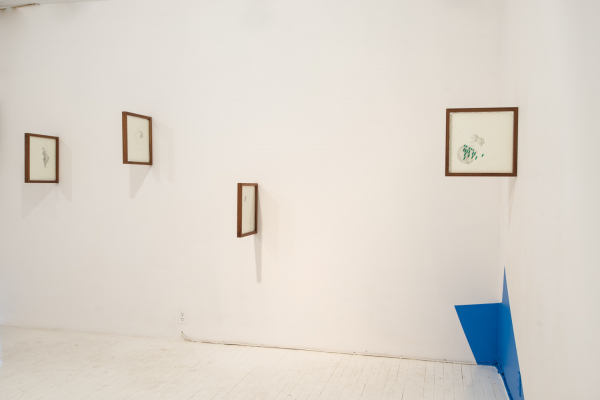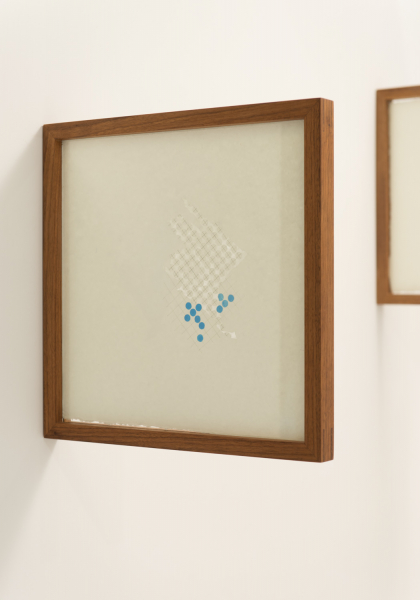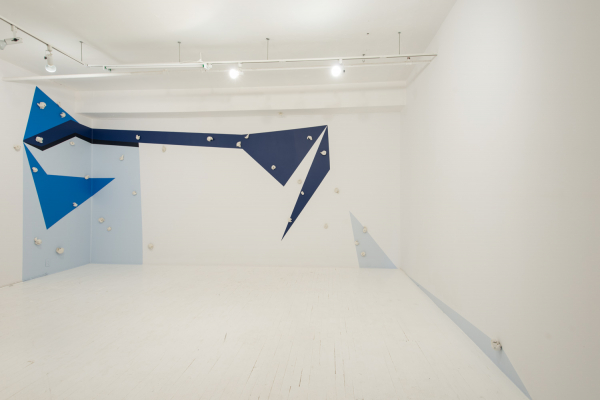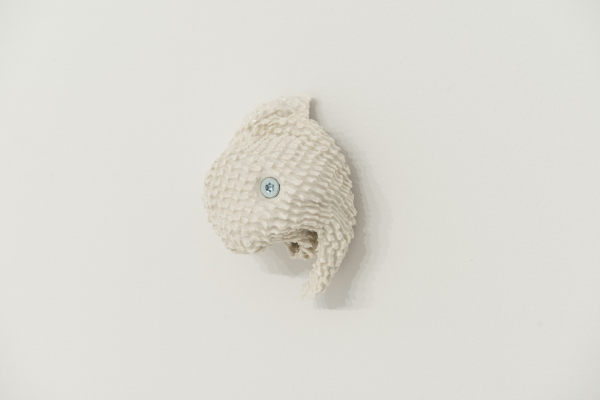Ascension
- Amélie BRISSON-DARVEAU
Itinerancy and Material Thought: Amélie Brisson-Darveau’s Ascension
How is material thought? What does it mean to trust materials, to follow their itinerant ways, to fold them, turn them over and into each other? Rather than romanticising these materials or heralding their contingent qualities, they make us think, and by that, let us feel. Amélie Brisson-Darveau’s work exposes a form of material thought through following materials with great persistency. There is nothing obsessive about this practice, however, nor is there a drive to impose one’s will onto matter. On the contrary, in her practice, materials become the very zone for a double process of exposure. On the one hand, the materials’ specific aesthetic qualities are exposed through the medium of installation. And on the other, exposure is a mindful process that allows the material to develop its own relations and possible meaning structures. Material thought takes the potential for processes of formation immanent to physical, vital and mental states and exposes their affinities in an itinerant manner.
In Ascension, itinerancy becomes a technique for material encounters, exposing deep and meaningful expressions. Putting oneself on a par with the material, Brisson-Darveau engages the play of structure and texture as the crucial relay between different geographies, bodily capacities, nature and culture. Textiles and clothes become the dynamic mould for white clay of Swiss origin, imprinting fine, almost subtle textures onto bone-like structures through the manual labour of twisting, pressing and stretching. What appears as anamorphic ceramics, actually relates to the omnipresence of artificial climbing walls in urban Switzerland, from playgrounds to boulders in public parks and giant indoor climbing centres. An artificial environment, often mimicking famous climbing routes in the Alps, brings together an immediate relationship of body, rock, movement and different geographies. Through these fake walls, we witness how a felt impression of what the human body is capable of, undoing the boundary between vital (human) and physical (rock) material through a movement practice.
Tracing movements of the body in relation to its natural and built environment defines Brisson-Darveau’s ongoing interest – the intimacies of bodies and architecture, mediated through the textural qualities of textiles. In this sense, the artist conceives of the human body and its milieu as mutually co-producing each other. Ascension underlines this circumstance through material relations. The blues on the wall are of the same pigment as Chinese, Dutch, and French porcelain. The geological and geographic become part of a shared cartography. Again, it is texture that allows us to think-feel the installation’s structure, exceeding its perceptual appearance. By giving the work a material volume through light and shadow, and by laying it out in space, the temporal dimensions of the piece hint at its political aspects. The textiles, once worn and inhabited, leave their lived traces, transforming their agency into a new context, actively shaping the meaning of the artwork in its very own manner. If we see the structure of the material as cartography of itinerant movements, then “our” share in this activity is no more and no less than an activation of thought – a political act in the event of sensation.
Christophe Bunner, 2014
Amélie Brisson-Darveau was born in Quebec in 1976, and lives and works in Montreal and Zürich. She completed a BA in Visual and Media Art at Université du Québec à Montréal and received a second BA in Social Work from Université de Montréal. She holds a MFA from Concordia University in the Fibre Arts program. She is interested in activating the dynamics between architecture, composition of movements (from the body or materials) and time. In her installations, performative actions and drawings, she makes these forces emerge and disappear simultaneously through layering, cutting, assembling, sequencing and synchronizing. Her work has been shown in various exhibitions and events in Canada, United-States, Switzerland, England, France, Germany, Finland, Lithuania, Turkey and Norway. She has received grants from FQRSC (Fonds de recherche sur la science et la culture) and the Canada Council for the Arts and the Emerging Artist Award from the Kaunas Textile Biennale.
Christoph Brunner is a writer and researcher at the Institute for Contemporary Art Research at Zurich University of the Arts. In his most recent work he deals with the notion of the collective in aesthetic practices, activism and media ecologies. Brunner has published with Third Text, AI & Society, Fibreculture, Inflexions, and the Journal of Aesthetics and Culture amongst others. He collaborates with artists, activists, architects and designers as part of his ethico-aesthetic experimental practice. Since 2008, he regularly participates in the activities of the Sense Lab in Montreal.





